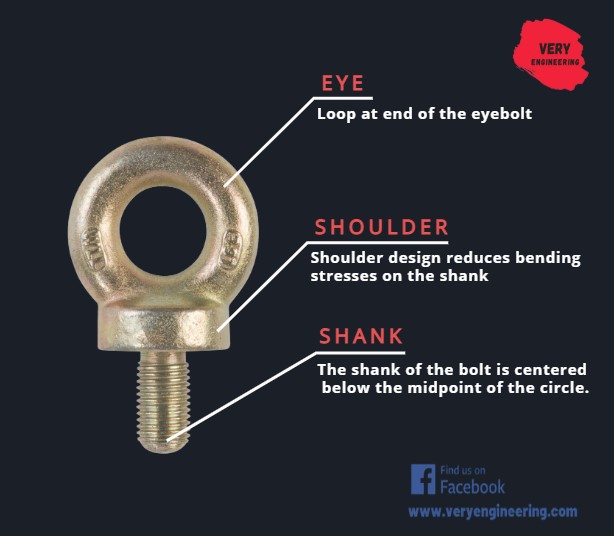What is Eye Bolt?
Eye bolts are a type of fastener distinguished by their lollipop-like shape. The threaded end of an eye bolt is similar to the threaded end of a screw, but the other end is circular. The shank of the bolt is centred below the circle’s midpoint in standard devices. Special eye bolts may also be offset or cranked such that the side cranks are located on the opposite side of the circle.
What is an Eye Bolt used for?
Typically, eye bolts are used to secure cables, straps, wires, or chains to other objects. For example, these bolts can be inserted into ceilings or beams to support ducts or plumbing pipes. They can also hang boxing bags or flower pots on the ceiling or on the porch. Installing eye bolts on the floor can support hanging objects and increase stability. It can also be installed on the wall to hang wires or strings to support the painting.

How Eye Bolt are made?
Eye bolts may be forged or welded, depending on their purpose and quality. The eye at the top of cast bolts is created by bending a piece of steel into a circle that does not fully close. A tightly closed circular eye is welded to the base or shank of the welding bolt.Both can also be used in a number of applications, but welding bolts are typically required in the more intense installations.
Many eye bolts are made of carbon steel, but like all steel objects, they can rust or corrode over time. Bolts used outdoors must be made of galvanized steel to withstand rust caused by rain and other rainfall. When the eye bolts are used around chemicals or in an industrial environment, stainless steel eye bolts minimize the risk of corrosion and help the bolts stay more effective over time.
How do you fix an eye bolt?
The different types of threads of the eye bolts help users distinguish between those designed for wood and machined from metal. Eye bolts designed for eye lag or wood bite wood with very strong threads and pointed tips along the shank. Sheet metal lag or machine eye bolts feature fine threads placed very close together to securely hold metal objects. Both wood bolts and metal bolts may have a full or partial threaded shank depending on the application.
When choosing eye bolts, the installer must find a device that can safely support the required load. In general, longer bolts and bolts with thicker shanks can support heavier weights. Larger diameter eyes can accommodate thick objects such as chains or heavy cables, while smaller diameter eyes can accommodate strings and thin wires.
How to choose the right Eyebolt for your application?
- Use plain or regular eye bolts (no flange) or eye bolts only when vertical tension is applied. The eye of an eye bolt without a flange can bend or break if subjected to angled tension.
- Use an eye bolt with the nominal weight stamped on it. Some eye bolts are marked with their thread size, NOT their rated capacity. Be sure to choose the eye bolt for the correct type and capacity for the lift to be performed.
- Use eye bolts with flange when tension is applied vertically or at an angle. Note that a lifting operation subjecting the eye bolts to angular tension decreases the load that can be moved safely.
- Follow the manufacturer’s recommended method for performing an angled tension lift.
- Use an eye bolt made of material that can withstand the environment in which it is used (eg corrosion, extreme weather conditions).






























Discussion about this post